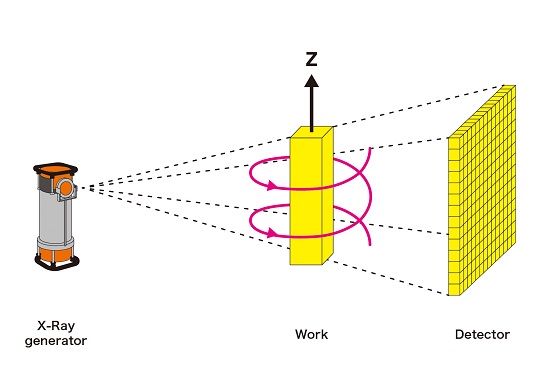What is scintillator?
An easy to understand the scintillator
With comfortable medical examinations and security inspections realized by
scintillators, a healthy and secure future is expected.
Our health and sense of safety are kept by radiation inspection such as X-rays CT, food
contamination inspection or airport baggage inspection. The scintillator contributes to these
sensing, and it is expected that the inspection accuracy will be improved and new inspection
methods will be developed in the future.
What is scintillator?
Scintillator is a general term for substances that emit
fluorescence when exposed to radiation such as X-rays and γ-rays, it is a type of phosphor.
When radiation collides with this substance, it absorbs its energy and internal
electrons move from the ground state (stable state) to the excited state (agitated state). When
this electron returns to the original stable state, it releases its energy in the form of light
emission (visible light or ultraviolet light), and this phenomenon is called scintillation.
The incident radiation can be measured quantitatively by photo-electrically converting
/ amplifying the emitted fluorescence with a photomultiplier tube (PMT) or the like. It is one of
the common methods to measure invisible radiation.

The history of the scintillator starts in 1903 with the first device that William Crooks created using the ZnS (zinc sulfide) screen. This is called “spin Sari scope”, and its usage was to visually observe the scintillation occurring on the screen in a dark room with a microscope. This technology brought many important discoveries, but the observation itself required a great deal of labor. In 1944, scintillators became more noticeable as Curran and Baker replaced visual measurements with newly developed PMTs. This is the first origin of a contemporary scintillation detector.
